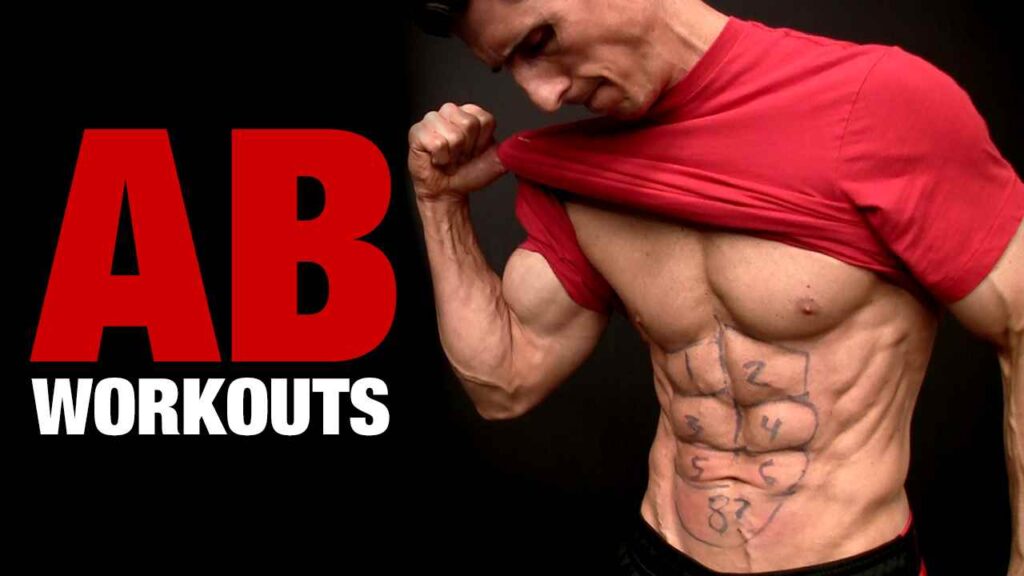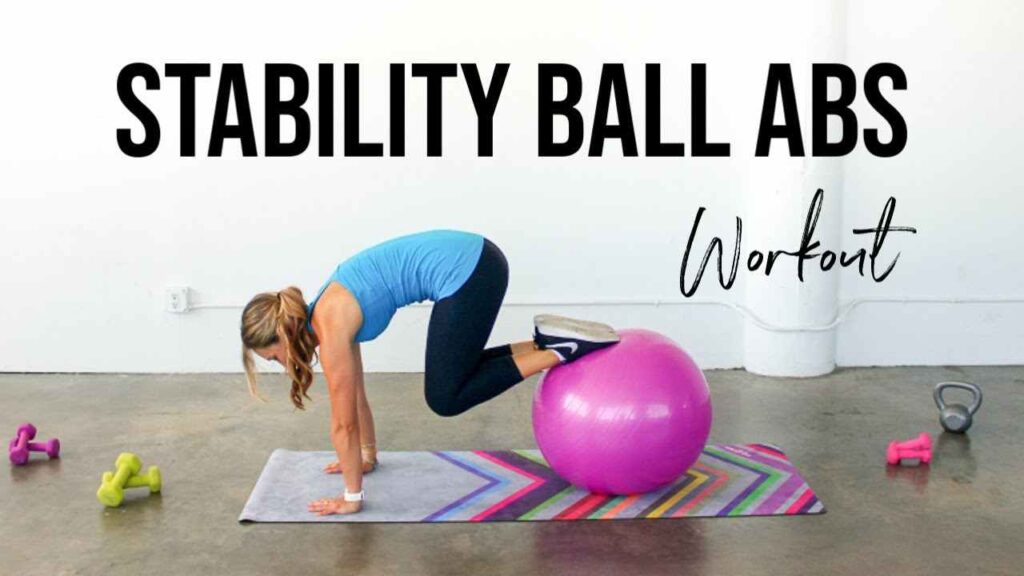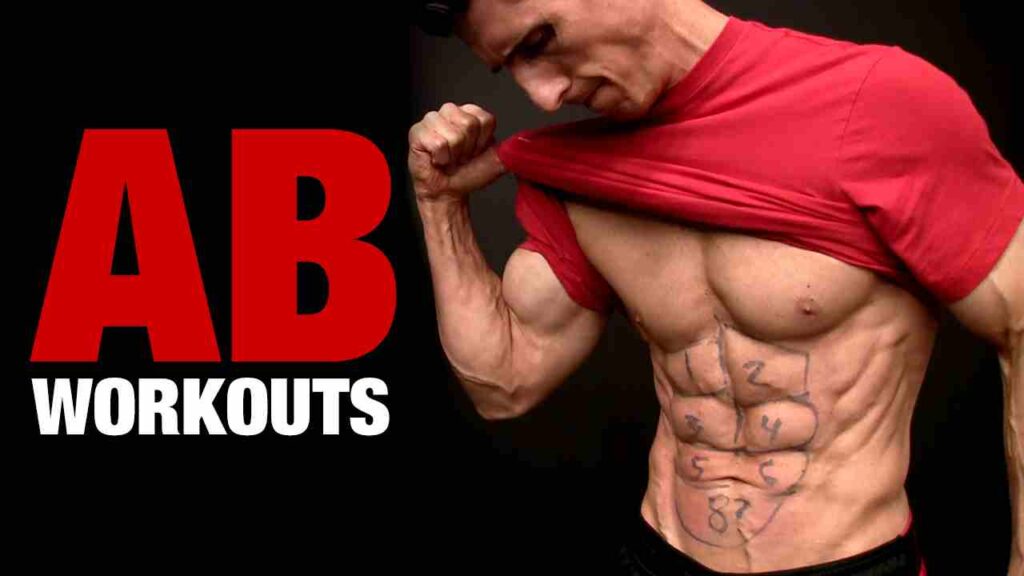Imagine this: You’ve been working out consistently, eating right, and seeing your body transform. Your upper abs are starting to show, and you’re feeling pretty good about your progress. But then, you look a little lower. Despite all your efforts, your lower abs seem to be playing hide and seek. You’re left wondering, “Are lower abs harder to get?” This is a question that has puzzled fitness enthusiasts and professionals alike. In this article, we’ll dive deep into the science of abdominal muscles, debunk some common misconceptions, and provide practical tips to help you achieve that elusive lower ab definition. So, let’s embark on this fitness journey together!
Understanding the Abdominal Muscles
The abdominal muscles are a group of muscles that span the front and sides of the abdomen. They include the rectus abdominis, transverse abdominis, and the internal and external obliques. The “lower abs” that we often refer to are not a separate muscle group, but rather the lower part of the rectus abdominis. This muscle extends from the bottom of the rib cage to the pubic symphysis. It’s responsible for flexing the lumbar spine, as when doing crunches. However, it’s important to note that you cannot selectively train the lower part of the rectus abdominis. When you work your abs, you’re working the entire muscle.
Why Lower Abs are Harder to Get?
The lower abdominal region is often considered a challenging area to develop because of several physiological and anatomical factors. Here are some reasons why lower abs can be harder to tone and define:
SHOP FOR THE AB ROLLER WHEEL ON AMAZON
- Fat storage: The lower abdominal area tends to be a common storage site for body fat, especially in men. Stubborn fat deposits can make it more challenging to reveal the underlying muscle definition.
- Genetics: Genetics plays a significant role in determining how and where your body stores fat. Some individuals may naturally store more fat in the lower abdominal region, making it harder to achieve a toned appearance.
- Muscle structure: The rectus abdominis muscle, responsible for the “six-pack” appearance, is a long muscle extending from the ribs to the pelvis. The lower part of this muscle is often thicker and has less connective tissue than the upper part, making it more challenging to define.
- Lack of focus in exercises: Traditional abdominal exercises may not always target the lower abs effectively. Many people focus on upper abdominal exercises like crunches and neglect exercises that specifically engage the lower abdominal muscles.
- Weak transverse abdominis: The transverse abdominis is a deep abdominal muscle that helps stabilize the core. Weakness in this muscle can contribute to the difficulty in achieving a toned lower abdominal region.
To effectively target the lower abs, consider incorporating exercises that emphasize the lower part of the rectus abdominis and engage the transverse abdominis. Leg raises, reverse crunches, and pelvic tilts are examples of exercises that can help target the lower abdominal muscles. Additionally, maintaining a healthy diet and overall body fat reduction can contribute to a more defined appearance in the abdominal region.
The Role of Body Fat and Diet
Body fat and diet play a crucial role in determining the visibility of your lower abs. As I mentioned before, lower abs are harder to get than upper abs because they are usually covered by more body fat. Therefore, you need to have a lower body fat percentage to see your lower abs clearly.
According to some experts, men need to have a body fat percentage of around 10% or lower, while women need to have around 18% or lower to have defined abs. However, these numbers may vary depending on your body type, genetics, and muscle mass.
SHOP FOR THE EXERCISE BALL ON AMAZON
To lower your body fat percentage, you need to create a calorie deficit, which means burning more calories than you consume. You can do this by eating a balanced diet that is high in protein, fiber, and healthy fats, and low in processed foods, added sugars, and refined grains. You also need to exercise regularly, combining both cardio and strength training to burn calories and build muscle.
Some of the foods that can help you get lower abs are fruits, vegetables, whole grains, nuts, seeds, fatty fish, and legumes. These foods are rich in nutrients and can keep you full and satisfied for longer. They can also boost your metabolism and enhance fat burning.
Is the Ab Wheel Rollout Better than Sit-ups?
On the other hand, some of the foods that you should avoid or limit are sugary drinks, alcohol, fried foods, fast foods, baked goods, and processed meats. These foods are high in calories, fat, sugar, and salt, and can increase inflammation, bloating, and fat storage in your body.
Exercises for Lower Abs
Exercising your lower abs can be a great way to strengthen your core and improve your overall fitness. Here are some exercises that can help you target this area:
Reverse crunches
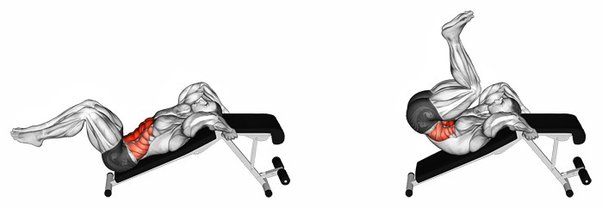
This exercise targets the lower part of the rectus abdominis, the main muscle of the abs. To do it, lie on your back with your legs bent and your feet flat on the floor. Place your hands behind your head or on the floor beside you. Lift your hips and knees off the floor and bring them toward your chest, curling your lower back. Pause for a moment, then lower your legs back to the starting position. Repeat for 10 to 15 reps. Tip: Keep your neck relaxed and your chin tucked in. Don’t use momentum to swing your legs up and down. Engage your core throughout the movement.
Lying leg raise
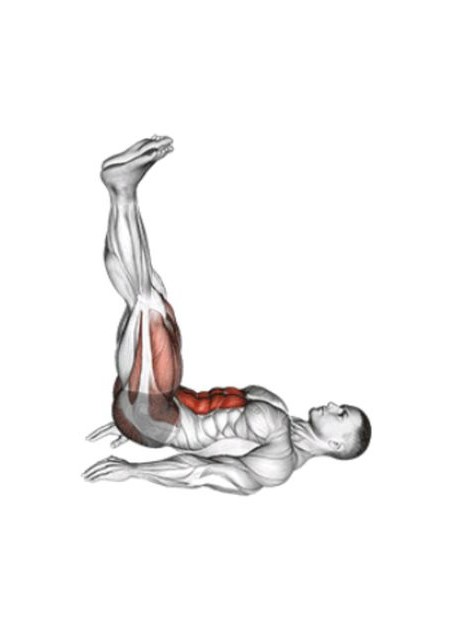
This exercise works the lower abs and the hip flexors, the muscles that help lift your legs. To do it, lie on your back with your legs straight and your arms by your sides. Press your lower back into the floor and brace your core. Lift your legs up until they are perpendicular to the floor, keeping them straight and together. Slowly lower your legs back to the floor, stopping just before they touch. Repeat for 10 to 15 reps. Tip: If you feel any strain in your lower back, place your hands under your hips for support. You can also bend your knees slightly to make the exercise easier.
Heel taps
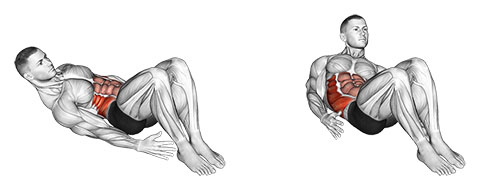
This exercise activates the lower abs and the obliques, the muscles that help rotate your torso. To do it, lie on your back with your knees bent and your feet flat on the floor. Lift your head and shoulders off the floor and reach your arms toward your feet. Keeping your upper body lifted, lower your right arm and touch your right heel with your right hand. Return to the center and repeat with your left arm and left heel. Alternate sides for 20 to 30 reps. Tip: Keep your eyes on the ceiling and your chin away from your chest. Don’t let your lower back arch off the floor. Breathe out as you touch your heel and breathe in as you return to the center.
Scissor kicks
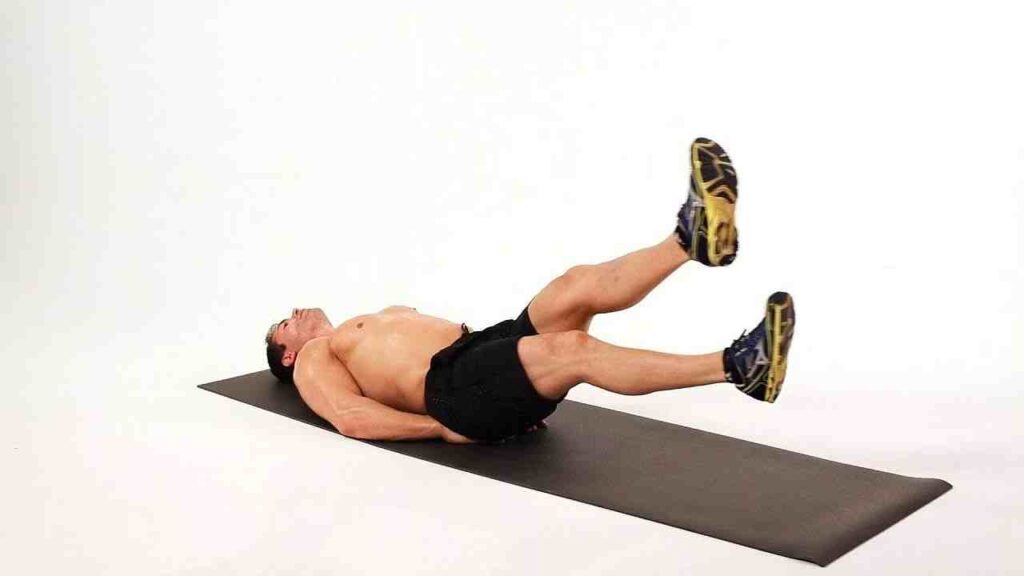
This exercise challenges the lower abs and the hip flexors, as well as the inner and outer thighs. To do it, lie on your back with your legs straight and your arms by your sides. Press your lower back into the floor and brace your core. Lift your legs a few inches off the floor, keeping them straight and together. Cross your right leg over your left leg, then switch and cross your left leg over your right leg. Continue alternating sides for 20 to 30 reps. Tip: Keep your legs as low as possible without arching your lower back. You can also place your hands under your hips for support. To make the exercise harder, lift your head and shoulders off the floor and hold your arms out in front of you.
Cross-body climber
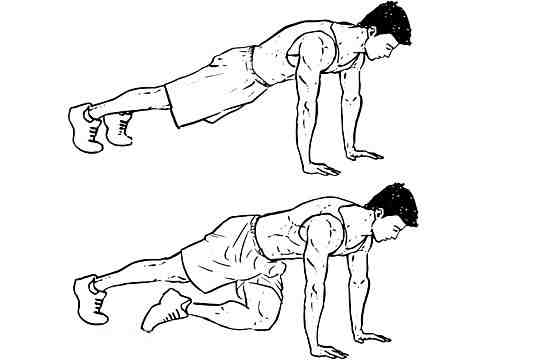
This exercise engages the lower abs and the obliques, as well as the shoulders, chest, and arms. To do it, start in a plank position with your hands under your shoulders and your body in a straight line. Bring your right knee across your body toward your left elbow, twisting your torso slightly. Return to the plank position and repeat with your left knee and right elbow. Alternate sides for 20 to 30 reps. Tip: Keep your hips level and your core tight. Don’t let your back sag or your butt rise. Move quickly but with control.
Knee tuck with exercise ball
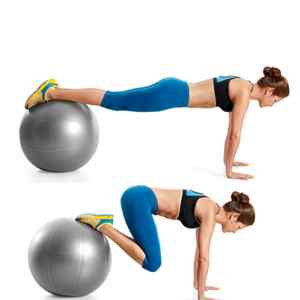
This exercise works the lower abs and the entire core, as well as the quads and glutes. To do it, start in a plank position with your shins on top of an exercise ball and your hands on the floor. Roll the ball toward your chest by bending your knees and hips, keeping your back straight. Pause for a moment, then roll the ball back to the starting position by extending your legs. Repeat for 10 to 15 reps. Tip: Keep your balance and stability by engaging your core and squeezing your glutes. Don’t let your shoulders shrug or your elbows lock. You can also do this exercise with a towel on a smooth floor instead of a ball.
Jackknife
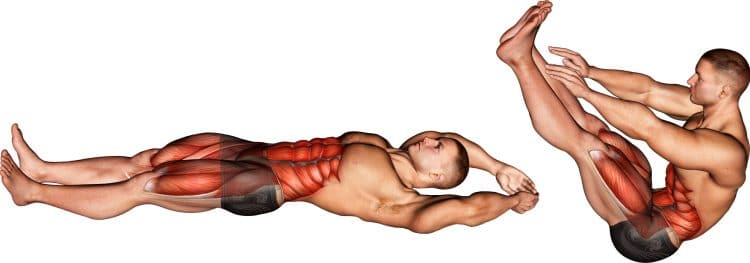
This exercise is a combination of the lying leg raise and the V-sit, and it works the lower abs and the entire core. To do it, lie on your back with your legs straight and your arms extended overhead. Lift your legs and arms off the floor and reach for your toes, forming a V shape with your body. Lower your legs and arms back to the floor, keeping them straight. Repeat for 10 to 15 reps. Tip: Keep your lower back pressed into the floor and your core engaged. Don’t let your legs or arms touch the floor. Breathe out as you lift and breathe in as you lower.
SHOP FOR THE RESISTANCE BAND ON AMAZON
Remember to engage your core throughout these exercises, focus on controlled movements, and avoid straining your lower back. Consistency is key, so incorporate these exercises into your overall workout routine for the best results.
Misconceptions about Lower Abs
There are several misconceptions about lower abs and abdominal training that can lead to confusion and frustration. Here are some common misconceptions:
1. Spot Reduction
- Misconception: Many people believe that doing targeted exercises for the lower abs will help reduce fat specifically in that area.
- Reality: Spot reduction is a myth. While targeted exercises can strengthen and tone muscles, they won’t necessarily reduce fat in that specific area. Fat loss occurs through a combination of a calorie deficit, cardiovascular exercise, and overall body fat reduction.
2. Separate Upper and Lower Abs
- Misconception: Some believe that the upper and lower abs are separate muscles that can be trained independently.
- Reality: The rectus abdominis is a single muscle that runs from the ribs to the pelvis. While different exercises may emphasize different parts of the muscle, there isn’t a clear distinction between upper and lower abs in terms of muscle activation.
3. High-Rep Ab Workouts for Toning
- Misconception: There’s a belief that doing high-repetition, low-resistance exercises is the key to toning the lower abs.
- Reality: Toning and definition come from a combination of muscle development and low body fat. While high-repetition exercises can contribute to endurance, incorporating resistance and progressive overload is essential for muscle growth and definition.
4. Neglecting Diet
- Misconception: Some think that focusing solely on abdominal exercises is sufficient for achieving a toned lower abs appearance.
- Reality: Diet plays a crucial role in revealing abdominal muscles. A well-balanced diet that supports a calorie deficit, along with overall body fat reduction, is essential for visible abdominal definition.
5. Overlooking Transverse Abdominis
- Misconception: The focus is often on the rectus abdominis, neglecting the importance of the transverse abdominis.
- Reality: The transverse abdominis is a deep core muscle that helps stabilize the spine. Strengthening it is crucial for overall core stability and can contribute to a flatter abdominal appearance.
6. Ignoring Genetics
- Misconception: Some believe that everyone can achieve the same level of abdominal definition with the same exercises.
- Reality: Genetics plays a significant role in how muscles develop and where the body stores fat. Individual variations mean that some people may naturally find it easier or more challenging to achieve visible abs.
SHOP FOR THE PROTEIN POWDER ON AMAZON
To effectively work on your lower abs, it’s essential to have a holistic approach that combines targeted exercises, overall core training, a well-balanced diet, and cardiovascular exercise for overall fat loss.
Gender Differences
Achieving abs, or a visible six-pack, is a common fitness goal for both men and women. However, some gender differences may affect how easy or hard it is to get abs. Here are some of the main factors:
- Body fat percentage: To see your abs, you need to have a low enough body fat percentage. This varies depending on your gender, age, and genetics, but generally speaking, men need to have less than 10% body fat and women need to have less than 20% body fat to have visible abs.
- Muscle mass: To have defined abs, you also need to have enough muscle mass in your abdominal region. Men tend to have more muscle mass than women, especially in the upper body, which gives them an advantage in building abs. Women may need to train their abs more frequently and intensely to achieve the same level of definition as men.
- Hormones: Hormones play a role in fat distribution and muscle growth. Men have higher levels of testosterone, which promotes muscle growth and fat loss. Women have higher levels of estrogen, which promotes fat storage and retention, especially in the lower abdomen, hips, and thighs. This makes it harder for women to lose the stubborn fat that covers the abs.
- Metabolic Rate: Men often have a higher metabolic rate than women, which means they burn calories at a faster rate. This can make it easier for men to reduce body fat and reveal their abs.
- Exercise Response: Men and women can respond differently to exercise. For example, a study found that men and women increased their VO2 max by the same amount after training for 9 months to a year, but the mechanism of improvement was different.
SHOP FOR THE PRE-WORKOUT SUPPLEMENT ON AMAZON
As you can see, there are some gender differences in achieving abs, but they are not insurmountable. With proper training, nutrition, and consistency, both men and women can get abs.
FAQs
Q. How long does it take to get lower abs?
Ans. The time taken to get lower abs can vary greatly depending on factors like your starting point, diet, and exercise regimen. It can range from 3 months to 2 years.
Q. Can everyone get lower abs?
Ans. While everyone has abs, not everyone can have visible abs due to factors like genetics and body fat distribution.
Q. What are the signs of progress when working towards getting lower abs?
Ans. Signs of progress can include seeing defined lines on the sides of your abdominal area or noticing that your middle has gotten leaner.
Q. How often should I train my lower abs?
Ans. You should ideally train your abs 2-3 times a week after your workouts.
Q. Do I need to take any supplements for getting lower abs?
Ans. While you can absolutely get abs without taking any supplements, some people find that supplements like protein powders, Creatine, and thermogenic can help speed up the process.
Q. What is the role of hydration in getting lower abs?
Ans. Staying hydrated is a key component to flattening your abs as it can help reduce bloating and give your abs a more defined appearance.
Conclusion
In conclusion, achieving defined lower abs is a complex process that involves more than just abdominal exercises. It requires a comprehensive approach that includes a balanced diet, regular and varied exercise, adequate sleep, and stress management. Genetics also play a role in how and where fat is stored in the body, making lower abs easier to achieve for some than others.
However, with consistency, dedication, and the right strategies, it is possible to get those coveted lower abs. Remember, everyone’s body is unique, and what works for one person may not work for another. It’s important to listen to your body and find what works best for you. Always consult with a fitness professional or nutritionist for personalized advice.

Good day, and welcome to Fitthour. My name is Shubham Vijay, and I am a certified personal trainer and nutrition coach with 6 years of experience in the fitness industry. At Fitthour, we specialize in types of training, such as strength training, cardio, or HIIT, and our mission is to help clients achieve their fitness goals and improve their overall health.

